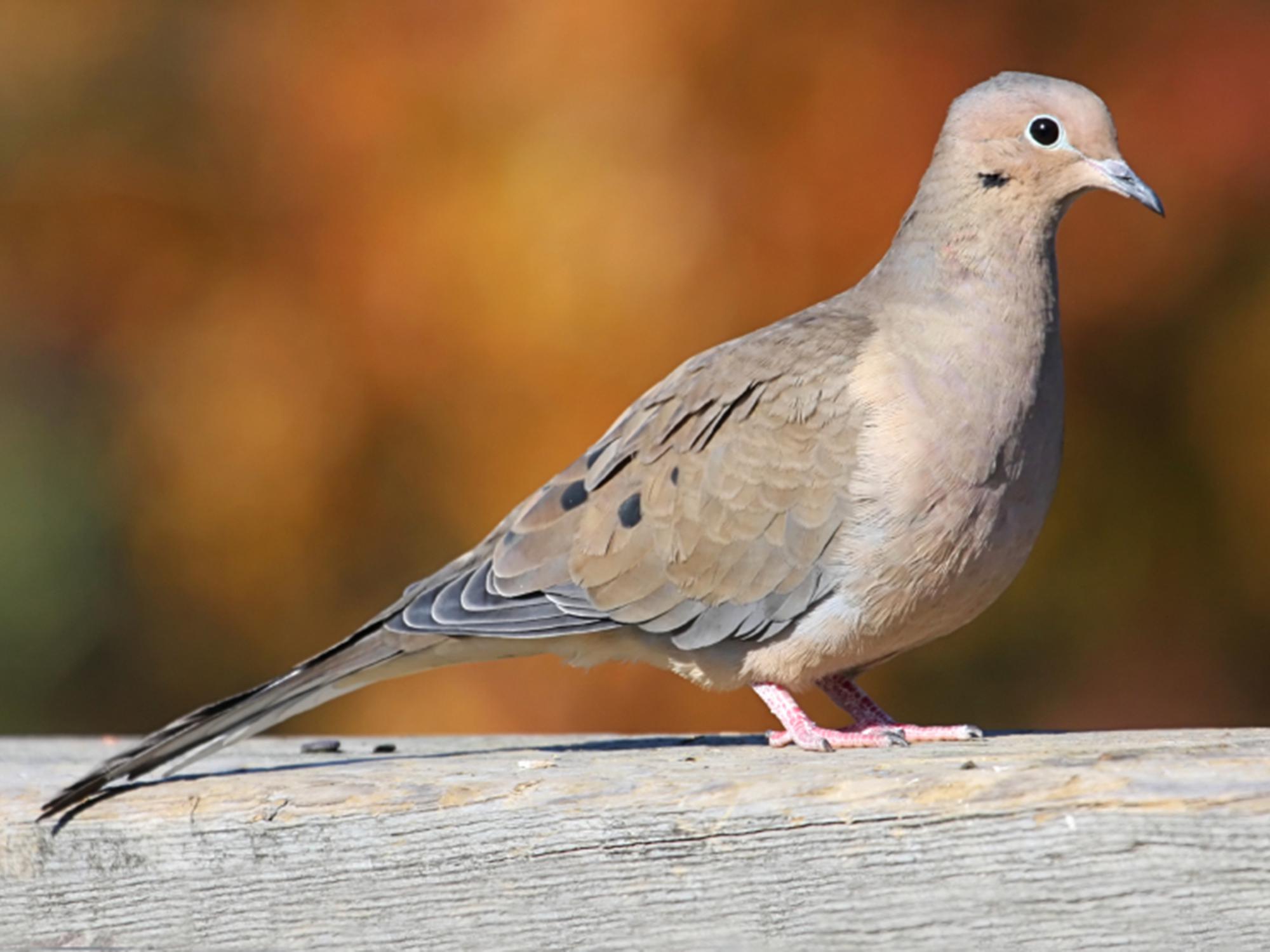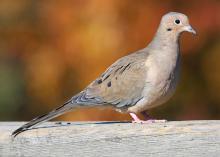Information Possibly Outdated
The information presented on this page was originally released on August 18, 2017. It may not be outdated, but please search our site for more current information. If you plan to quote or reference this information in a publication, please check with the Extension specialist or author before proceeding.
Mourning doves bring enjoyment, recreation
STARKVILLE, Miss. -- Mourning doves are popular game birds and songbirds in North America. Common in urban and suburban environments, they often are seen perched on utility wires or feeding in fallow grain fields or on the ground under bird feeders.
Mourning doves have a plump body, small head, buffy feathers with scattered black wing spots, long tail feathers, and short, pink legs. It is smaller and less colorful than its pigeon cousins that are often seen around city parks, bridges and silos.
Many people mistakenly think the name for this species is “morning dove” because the birds can be heard calling with the morning sunrise. Mourning doves are actually named for their soft, mournful song -- coo-OO-oo-oo. Mourning doves also make a sharp whistling sound with their wings when they take off and land, which may help warn the flock or startle predators.
Mourning doves live in urban and rural settings. They are year-round residents across most of the U.S. The ones that breed in the northern U.S. and southern Canada will migrate south as far as Mexico for the winter to escape food shortages caused by heavy snowfalls.
A dove’s diet is made almost entirely of seeds from grasses, weeds and cultivated grains such as wheat and millet. Doves have a small bill that cannot crack seeds. Instead, they swallow whole seeds and stores them in their crop, an enlarged section of their esophagus. Once on a safe perch, they will digest their food, moving the seeds from their crop to their gizzard where strong muscles and rocky grit grind up the seeds.
Doves build flimsy nests in shrubs or evergreens. They will also nest on the ground and even in eaves and gutters. Mourning doves lay only two eggs, but they nest several times each breeding season. This strategy allows them to overcome chick losses, and it keeps mourning dove populations healthy.
To attract these birds to your yard, provide feeding and nesting sites. Place birdseed on low platform feeders. Allow a little bare, gritty dirt to remain and provide a source of clean water. Plant shrubs for roosting and raising young in safety from predators and harsh weather. Keep cats indoors to protect doves and other small creatures.
Mourning doves are popular game birds, so healthy dove populations allow the opportunity for recreational hunting. If a fall dove hunt is your goal, start in the spring by planting a small field with a variety of grains such as sorghum, browntop millet and sunflowers. Aim to have the seeds shattering from the plants by late summer. A few weeks before dove season, create strips of bare ground by disking rows into the field. The open spaces and bare soil will attract doves and make finding downed birds easier.
Consider using steel shot to eliminate the possibility of lead poisoning. Research shows doves will pick up lead pellets while foraging. Since mourning doves can live up to 10 years in the wild, continual exposure to lead in their diet may contribute to health issues.
Mourning doves are beautiful animals enjoyed by birdwatchers and hunters alike. With good stewardship practices, this species will continue to bring enjoyment for years to come.

Editor’s Note: Extension Outdoors is a column authored by several different experts in the Mississippi State University Extension Service.









